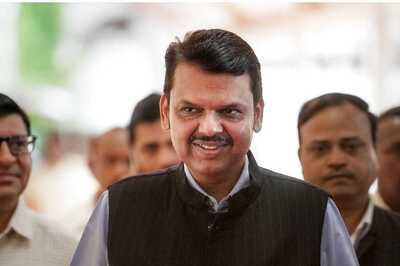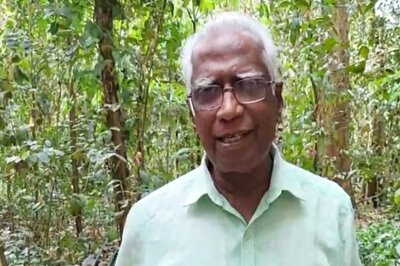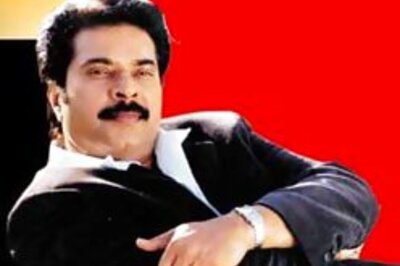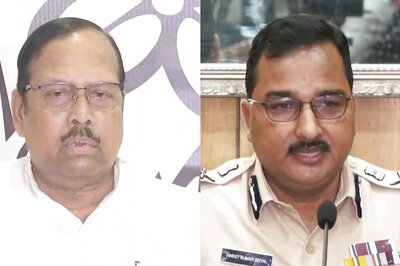
views
Kerala bucking Modi magic and BJP’s attempts to convert the Sabarimala temple controversy into a la Ayodhya in God’s Own Country has underlined one fact for the BJP – its Hindutva and social engineering model that paid such rich dividends in the north has failed to work here.
Kerala is a byzantine state going by its socio-cultural, educational and political constructs. Such is the demographic and religious divide, it needs a special focus and treatment if the BJP has to make inroads.
The BJP has the potential to emerge strong like it did in West Bengal at the cost of CPM if it is able to split the minorities or emerge as a B-team of the Congress. The results also underscore that the voters have rejected the muscular politics of both Narendra Modi and Pinarayi Vijayan.
The Congress-led UDF swept the polls bagging 19 out of 20 seats. The CPM saved itself from ignominy by winning a lone seat in Alapuzha while the BJP was reduced to cinders.
The saffron party failed to bag a single seat belying expectations that this time around it will break its electoral jinx by riding on the Sabrimala storm that had touched a raw nerve with a section of Hindus in the state.
For BJP, it is a wake-up call in Kerala. The party cannot win the state boasting of unique demography and cultural milieu with conventional politics. While Sabrimala temple issue worked against the CPM, the BJP failed to milk the controversy and the Congress became the beneficiary by default.
What led to BJP’s failure to open its Lok Sabha account in Kerala? Here are the five key factors have halted BJP’s march to victory in Kerala.
- Tactical voting by minorities (nearly 46 per cent) as they consolidated behind the UDF, leading to the BJP and the CPM’s rout.
- A section of CPM’s Hindu voters, unhappy with its handling of Sabrimala issue, shifted to the Congress.
- Anti-incumbency of the Left Front government.
- BJP created a disproportionate hype over Sabrimala and unduly banked on its electoral potency in a highly literate and ideologically rooted state like Kerala.
- BJP’s lack of strong and charismatic state level leadership, absence of a strong organization and turf war among some leaders.
Of the 20 Lok Sabha seats in Kerala, BJP had identified five “strong” constituencies – Kasargod, Palghat and Thrissur in the north and Pathanamthitta and Thiruvananthapuram in the south – as “winnable” seats. In fact, the latter two were considered as sure shot till the day of counting.
After decades of struggle, the BJP had opened its electoral account in Kerala in 2016 by winning a lone assembly seat – Nemom, which falls under the Thiruvananthapuram LS constituency, by senior leader O Rajagopal.
In the 2014 Lok Sabha elections, Rajagopal had put up a stiff fight against Congress’s Shashi Tharoor, emerging runner up by bagging 2,82,336 votes. Tharoor won the seat by a margin of just 15,470 votes. With Sabrimala and Modi’s charisma, BJP was hopeful of humbling Tharoor this time, but its calculations went awry.
One reason for the suave and affable Rajgopal to emerge runner up in 2014 was because of the goodwill he commanded among people cutting across the political lines while his replacement - Kummanam Rajasekharan, former state president and former governor of Mizoram, seen as a radical face, was a mismatch for the highly popular Tharoor.
So it was no wonder Tharoor substantially improved his margin of victory this time.
What must hurt BJP more is that it could not win even the Pathanamthitta seat, epicenter of Sabrimala storm and a constituency with 60 per cent Hindus.
In September last year, the Supreme Court had lifted a ban on the entry of menstruating women into the Sabrimala temple, triggering vociferous protests by BJP and several right-wing Hindu outfits. The controversy divided Kerala. BJP and the CPM respectively organized mass protests and counter protests to use the issue for electoral gains, but the dividend went to the Congress.
The grand old party adopted a crafty stance towards Sabarimala; the state leaders backed the protesting Hindus while the central leadership rooted for gender equality.
In Thrissur, the BJP had fielded popular film actor Suresh Gopi but he was relegated to the third position behind the Left candidate. Barring Thiruvananthapuram, its candidates in all other 13 constituencies (six seats were allotted to its ally), were pushed to the third spot.
As for the CPM, it is clear chief minister Pinarayi Vijayan misread the pulse of the state. In January, trying to emerge as a “renaissance” leader, he mobilized all anti-BJP social forces under the aegis of the historic 50 plus lakh women’s wall demanding gender equality that took the sting out of BJP’s claim that popular mood was against women’s entry into the temple. But the chief minister could not build on it.
(The author is a senior journalist and political commentator. Views are personal.)



















Comments
0 comment